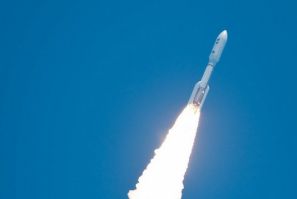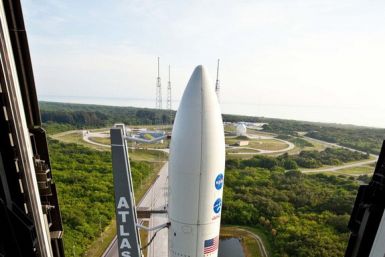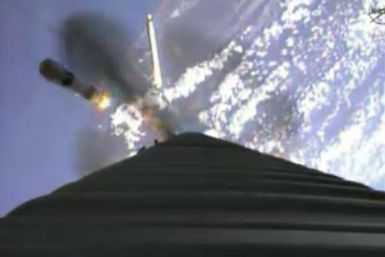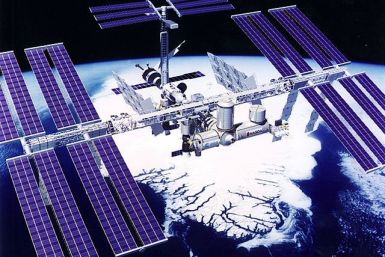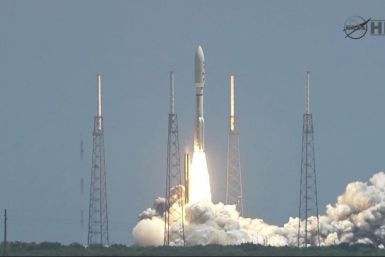New evidence suggesting the existence of water flowing on Mars indicates the possibility for life to exist on the Red Planet.
Solar-powered unmanned Juno spacecraft was blasted off into space in an Atlas V rocket from Cape Canaveral on Friday, as NASA continued its quest to unravel the secrets of Planet Jupiter, the gas giant 1.7 billion miles away from Earth. The ambitious $1.1 billion mission, which is in continuation of NASA's earlier missions to Jupiter, will culminate in July 2016. The following is a low-down of all previous missions to Jupiter, the details about the Juno space probe, how it works and a lot mor...
NASA is seeking proposal to launch small cube-shaped satellites to fly on rockets between 2012 and 2014.
A severe solar storm could cause global chaos, wrecking satellite communications and would take down the most important power grids in the world for a period of years.
After settling at Jupiter's orbit, Juno will study the planet for one year to learn how and when it existed. The study will help to understand the planet formation processes as well as the evolution of the solar system, researchers said.
"Harry has already completed his studies of Land and Sea Surveillance and Oceanology - part of Astro training - and can't wait to get into one of Nasa's T38 training jets," a royal source said.
NASA's Mars Reconnaissance Orbiter revealed on Thursday that highly salty water may flow on Red Planet during the warmest months, which raise the chances that life could exist on Mars.
NASA's solar-powered Juno spacecraft lifted off from Cape Canaveral Air Force Station in Florida at 9:25 a.m. PDT (12:25 p.m. EDT) Friday to begin a five-year journey to Jupiter.
Defense contractor Boeing said that it would send its own employees to space as it ratchets up its efforts to enter the private space market as the U.S. ends its national space shuttle program.
NASA launched spacecraft Juno for its Jupiter mission at 12:25 p.m. ET on Friday.
Boeing said that two of its employees will act as crew members in the first manned mission of its new astronaut capsule. The company confirmed that it will use the Atlas 5 rocket to test on three flights in 2015.
Scientists found evidence of saltwater on Mars. Shifting dark streaks on the planet's surface imply that there is water flowing on Mars.
NASA launches Juno into space as the spacecraft heads towards the solar system's biggest planet.
Watch as NASA launches Juno into space.
The NASA spacecraft Juno will lift off at 11:34 a.m. on Friday from Space Launch Complex 41 at Cape Canaveral Air Force Station in Florida. The four-ton spacecraft will start a five-year journey to Jupiter, the largest planet in the solar system, according to NASA's statement.
Boeing selects United Launch Alliance's Atlas V rocket for its spacecraft.
Teachers, enthusiasts take to Twitter to cover launch.
Defense contractor Boeing said on Thursday that it plans to launch its spaceship towards the International Space Station powered by Atlas 5 rockets.
The countdown of Juno mission to Jupiter is moving ahead toward a lift-off at 11:34 am EDT, NASA said in a statement. The weather forecast is positive on Friday and there are no indications of technical issues.
Sky-watchers and astronomers may witness a spectacular display of natural lights on Friday caused by the strong solar flare that occurred on Aug 2, 2011.
A new theory published in scientific journal Nature states that the primary collision of two moons that once orbited Earth is the reason why one side of our present moon is a bit lopsided and its far side (which is not visible from earth) is much rockier.
Scientists have found new evidence of possible salt water flows on Mars, which could lead to traces of life being found on the red planet.







